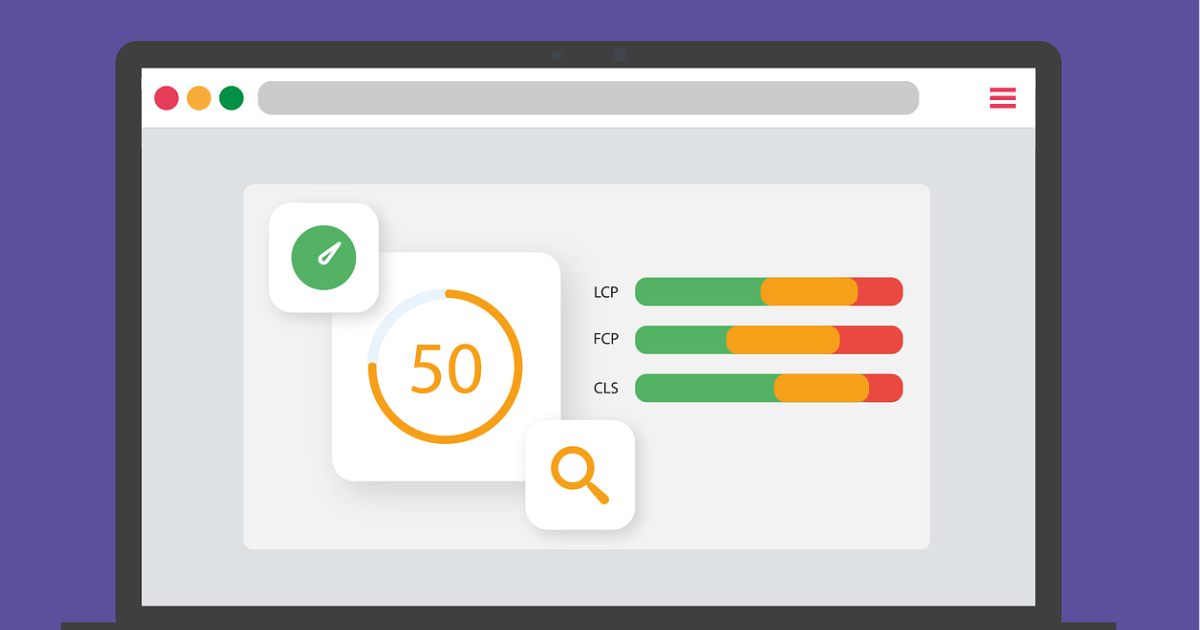“How does the presence or absence of a table of contents affect SEO?”
“Should a blog have a table of contents?”
Do you have such questions?
Just as a table of contents is often included on the opening pages of a book, many web articles also have a table of contents.
Among web managers and blog operators, there are many who are curious about whether this “table of contents” affects SEO.
To cut to the chase, having a table of contents has a positive impact on SEO.
In this article, we will explain in detail about this, including the reasons.
- What is a blog table of contents
- Does the presence of a table of contents affect SEO
- Three benefits of having a table of contents
- Points to consider when creating a table of contents
- Three methods for adding a table of contents
If you’re wondering about the “SEO effects and necessity of a table of contents,” please refer to this article.
Table of contents
What is a Blog Table of Contents
A blog table of contents is a list of linked headings placed at the top of an article.
Since it’s also included in this article, you’ve probably seen it just before this chapter.
The table of contents serves the purpose of conveying an overview and approximate volume of the article to users and facilitating jumps to specific sections.
Sometimes, people recognize links displayed on search results as “table of contents,” but these are called “site links.”
Since what we are explaining here as “table of contents” is different, if you are interested in site links, please refer to Google’s explanation
Learn About What Sitelinks Are | Google Search Central
From the next chapter, we will explain about the main topic, the “SEO effects of a table of contents.”
Does the Presence of a Table of Contents Affect SEO
To cut to the chase, having a table of contents on a blog affects SEO.
However, it’s as an indirect factor rather than a “ranking factor” directly affecting search rankings.
Table of Contents is Not a Ranking Factor
As of May 2021, a table of contents is not considered a “ranking factor” directly influencing search rankings.
In other words, the absence of a table of contents does not cause a decrease in search rankings.
Google has not officially mentioned the relationship between a table of contents and search rankings, so this is purely speculative.
However, since there are sites that rank high without a table of contents, it is speculated that a table of contents itself is not a ranking factor.
Bloggers Report Positive Effects of Adding a Table of Contents
Nevertheless, there have been reports from several blogs that adding a table of contents had a positive SEO effect.
This personal blog (its Vicky), which shares information about web marketing, installed a table of contents in three articles and verified the ranking fluctuations over two weeks.
As a result, a slight improvement in rankings was shown.
- Keyword 1: From 7th to an average of 6.6th
- Keyword 2: From 5th to an average of 4.3rd
- Keyword 3: From 10th to an average of 9.9th
Reference: its Vickey – Does a “Table of Contents” Increase Ranking in Google?
Also, this blog (Blogbu) reported an improvement in user page dwell time and bounce rate due to the installation of a table of contents.
- Dwell time: Without a table of contents 2 minutes 12 seconds → With a table of contents 3 minutes 39 seconds
- Bounce rate: Without a table of contents 82.2% → With a table of contents 79.8%
Reference: Blogbu – Is a Table of Contents Necessary for a Blog? Opening the Benefits and How to Make it
Table of Contents Indirectly Affects SEO
In conclusion, a table of contents indirectly affects SEO.
This is because a table of contents is closely related to “user convenience”.
Imagine for a moment.
Despite being a long article exceeding 5000 characters, if the page lacks a table of contents and the desired information cannot be found even after scrolling multiple times…
Would you introduce such an article to others or want to revisit the site?
In terms of SEO, backlinks and citations are factors that determine Google’s evaluation.
Therefore, articles that are not recommended by others (lack backlinks and citations) are not evaluated by Google, ultimately significantly impacting SEO.
Of course,
- If the article doesn’t require a table of contents due to its low word count
- If you want readers to sequentially read each chapter
In cases with clear intentions like these, a table of contents may not be necessary.
However, in many blogs, a table of contents can enhance usability and potentially bring indirect positive SEO effects.
There are also benefits, as introduced in the next chapter, so we recommend considering its installation.
Three Benefits of Adding a Table of Contents
Adding a table of contents to a blog article has three major benefits.
- Improves usability
- Helps Google understand content easily
- Possibility of being displayed on search results page
Let’s look at each of them in detail.
Benefit 1.Improved Usability
As mentioned earlier, a table of contents enhances usability.
- Allows understanding of the overall structure
- Highlights key points
- Enables quick navigation to areas of interest
Among these, the third point, “Enables quick navigation to areas of interest,” is particularly crucial when dealing with online readers.
This is because, fundamentally, internet users want immediate access to the information they need, and they only thoroughly read sections that genuinely interest them.
While this data is a bit outdated, Dr. Jakob Nielsen’s research indicates that 79% of users skim-read web pages.
Reference: Nielsen Norman Group – How Users Read on the Web
Additionally, our site’s heatmap confirms that the table of contents is indeed being clicked.
Furthermore, considering Google prioritizes “user convenience,” it’s evident that pages that are user-friendly and easy to find information on have advantages in SEO.
1. By focusing on the user, everything else will follow.
Google has always prioritized user convenience…
Benefit 2.Makes Content Easily Understandable for Google
The table of contents placed at the beginning of an article also assists search engines in understanding the content.
Those involved in SEO are likely aware that Google crawls pages by following links.
The table of contents is a collection of links to each heading.
Therefore, this linkage serves as navigation for crawlers.
It communicates to Google “what information is contained in which part of the article.”
Because of this, the crawler’s traversal becomes smoother, and the content can be better understood, leading to expected SEO benefits.
However, the items in the table of contents (displayed as “anchor text” links) must be text that immediately indicates the content of the linked section.
We’ll explain the key points for creating a table of contents later.
Benefit 3.Potential Display on Search Results Page
By installing a table of contents, there is a possibility of additional links appearing on the search results page.
Clicking on each link allows direct jumping to specific headings within the article, providing higher usability.
SEO information media “Search Engine Land” reports that 10% (1 in 10 people) of those who clicked on a page actually clicked on these table of contents links.
Reference: Search Engine Land – Pro Tip: Table of contents can provide additional link options in organic search
Moreover, when more information is exposed in search results, there is a high potential for increased click-through rates and traffic, resulting in indirect SEO effects.
In this way, installing a table of contents for a blog has numerous benefits, enhancing SEO effectiveness.
However, merely creating a table of contents is not enough.
In the next chapter, we’ll share points to consider when creating each item in the table of contents.
Points for Creating a Table of Contents
Reflect the content of each heading (up to h1, h2, h3, etc.) in the table of contents.
Matching the headings with the table of contents items allows users to navigate through the information in the article without confusion.
If the heading becomes the table of contents as is, you must already be conscious of the following points when creating the heading.
- Ensure the heading is not too long
- Check if the heading matches the content of the text
- Verify that the entire article is appropriately structured by headings
- Confirm that headings are not only used for adjusting appearance
- Ensure that the content of the article can be grasped just by looking at the headings
In many cases, users first refer to the table of contents to determine if “the information they are looking for is included in the article” and “if the article is worth reading.”
Master these points and think about creating enticing headings and a table of contents that make readers say, “I want to read this!”
Now, in the final chapter, we’ll explain how to install a table of contents.
Three Methods for Setting Up a Table of Contents
For those who want to know “how to set up a table of contents,” we’ll introduce three methods.
- Use a plugin
- Use a theme with a built-in table of contents feature
- Write HTML tags
Let’s look at each of them.
Method 1: Setting Up a Table of Contents Using a Plugin
For those who already have a WordPress blog, using a plugin is the easiest method.
In particular, the plugin “Table of Contents Plus” is widely used and allows for easy introduction of a table of contents.
The steps are as follows:
- After logging into the WordPress admin panel, select [Plugins] > [Add New]
- After searching for “Table of Contents Plus,” click [Install Now]
- Activate the plugin and configure settings such as “Position,” “Display Conditions,” and “Heading Levels”
Method 2: Setting Up a Table of Contents Using a Theme with Built-in Feature
For those planning to start a blog, choosing a WordPress theme with a built-in table of contents feature is also an option.
“Cocoon” comes with a feature to automatically generate a table of contents.
However, when deciding on a theme, it’s crucial to consider various elements other than the table of contents and choose one that aligns with your goals.
Method 3: Setting Up a Table of Contents by Writing HTML Tags
If you want to insert a table of contents without relying on plugins or themes, you can write specific HTML tags.
This method requires more effort and specialized knowledge compared to the other two methods.
The general steps to create a linked table of contents with HTML tags are as follows:
- Place “id=’〇〇 (any name)'” on each heading that serves as the destination
- Inside the list tag, place text with a link to the destination id using the href attribute
In this way, there are three methods for setting up a table of contents.
Choose the most appropriate method for your purpose and situation.
[Conclusion] Effective Installation of a Table of Contents! Enhance User Convenience for SEO Benefits
How was it?
This time, we provided a detailed explanation of the SEO effects and benefits of a table of contents.
By installing a table of contents, you can gain the following benefits, indirectly leading to positive SEO effects:
- Improved usability
- Easier understanding of content by Google
- Potential display on search results page
If you felt “I need a table of contents for my blog,” please try installing it using the methods we introduced.
Note that our company, ExScore, provides support for SEO measures.
Following the latest guidelines recommended by Google, we will propose measures necessary to rank your site high.
You can contact us using the button below, so please feel free to use it.




